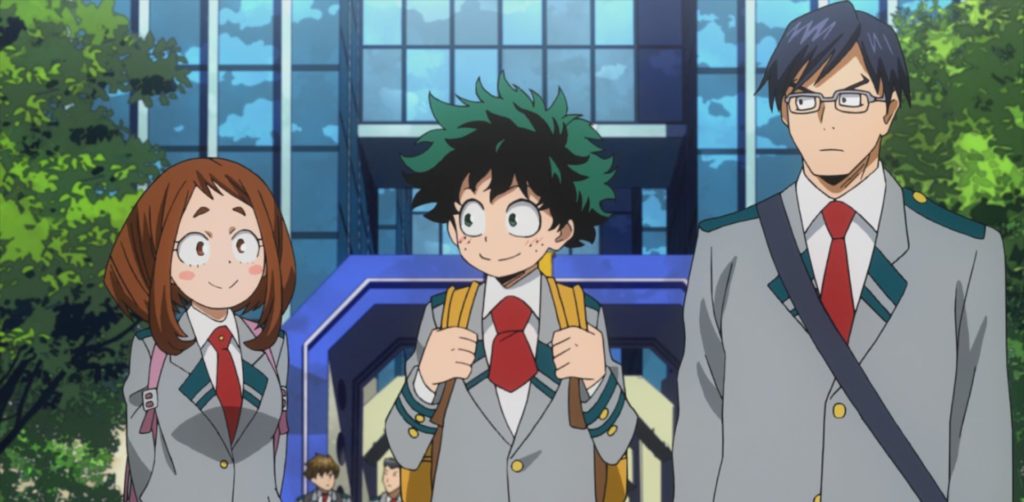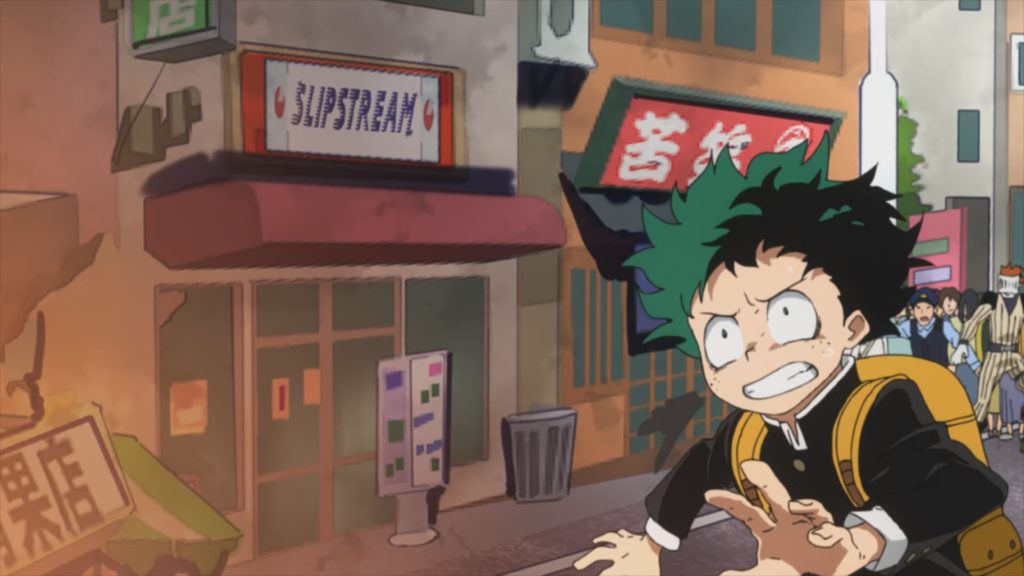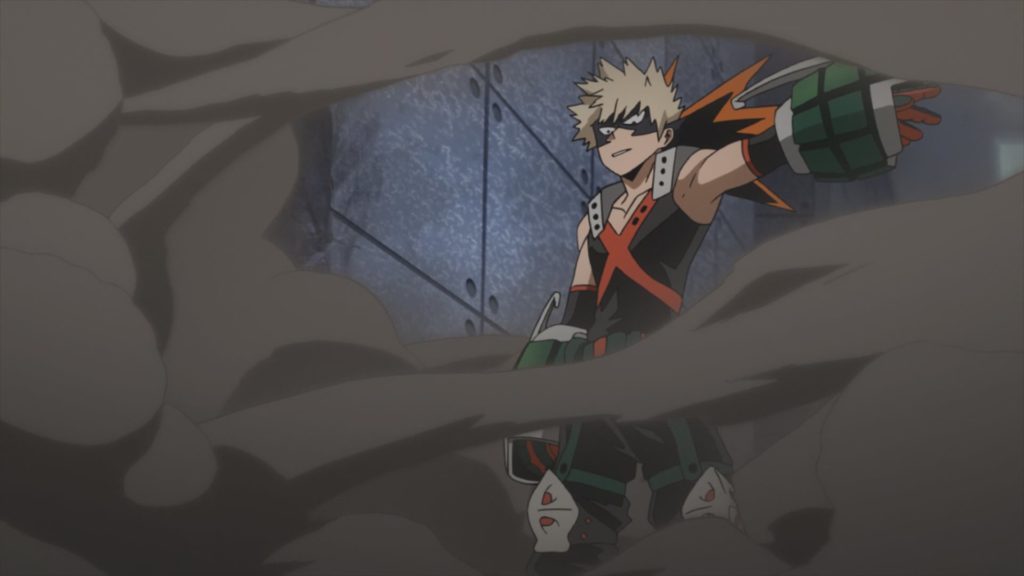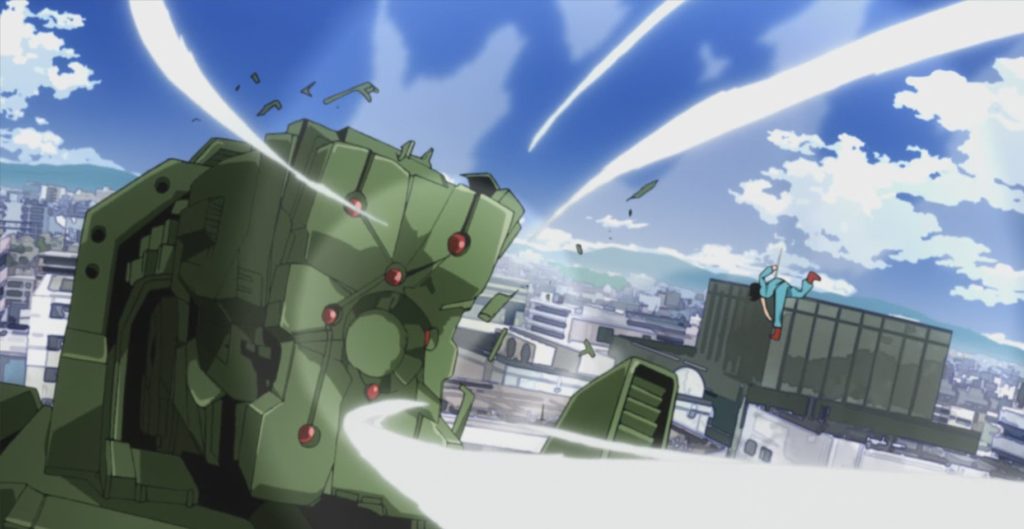My Hero Academia – Season 1 Review
Originally released a couple of years ago by Universal Pictures (which Cold Cobra reviewed), the first season of My Hero Academia returns, thanks to Manga Entertainment now having full rights to the series. While it is essentially the same as Universal’s offering (minus physical bonuses), this re-release offers a great chance for fans to own the opening salvo of the series.

Taking heavy inspiration from western comics and entertainment, My Hero Academia feels like a combination of X-Men and Harry Potter, focusing its story on the students of U.A. High School as they train to become the next generation of superheroes in a world where, due to 80% of the world’s population having super powers (or Quirks, as the series calls them), criminals have become dangerous villains who can only be stopped by professional heroes.
While the concept of a long-running shonen show set in a school is nothing remarkable, it’s My Hero Academia’s character-focused story that sets it apart from the rest. While we don’t really get to know all of the characters at this early stage, it still does a good job of introducing those that really matter to the worldview of our main protagonist, Izuku Midoriya.

The first half of the series is really Midoriya’s origin story, placing a large focus on him going from zero to hero-in-the-making before it opens up and explores some of the other members of the cast. Unlike his peers, Midoriya was born without a Quirk, yet he is still determined to become a full-fledged hero, dreaming of enrolling onto U.A.’s prestigious hero course, as impossible a task as that might seem.
His fate changes when one day he gets involved with a villain on a rampage, bringing him into contact with his hero, role model, and the world’s greatest hero, All Might. After showing heroic qualities by attempting to save his childhood friend Bakugo from the villain, Midoriya is selected by All Might to be the successor of his Quirk, One for All; an ability that embodies superhuman strength but is passed down and cultivated by generations of heroes.

While shonen series often have very identifiable characters, My Hero Academia excels at it by making the characters very expressive, allowing you to really get into their heads. From All Might’s beaming smile to Bakugo’s brief flash of fear when he’s in the villain’s clutches, it’s those facial expressions that really allow you to connect with the characters’ hearts. The frequent flashbacks to Midoriya’s childhood, for example, really let you sympathise with him (and in particular his poor mother), as you can really feel the shock at the abrupt diagnosis.
Meanwhile, looking at Midoriya’s friend and rival Bakugo, the series also seems to focus on showing that it’s often not all about having natural talent; and that someone who works hard can achieve better results than someone who is cocky and overconfident in their abilities. Midoriya and Bakugo are set up as rivals right from the start in that regard and it has some interesting lessons to offer in not thinking too highly of yourself.

The second half of the series balances introducing different cast members with showing Midoriya developing his new-found power, starting off with some simple test exercises that allow the students to showcase their different abilities. There’s a large variety of powers on show, and it feels like the character designs have really been tailored around them. While each character is unique, the ones that stand out the most are the mutant types, who either embody their powers naturally or are able to transform. Two of my particular favourites are the bird-headed Tokoyami, whose Dark Shadow Quirk is not only mysterious but deadly to both enemies and its user; and the frog girl, Tsuyu Asui, who has one of the most versatile and useful abilities at this early stage, flourishing in water and having her long tongue to use as a helpful third limb. When the series’ main antagonists, Shigaraki Tomura and the League of Villains, are introduced at the tail-end of the season, she quickly picks up the spot for most underrated character, running rings around the water-based villains that pile into the grandstand finale that sees the U.A. students under attack at the training theme park, USJ.
While these characters come together to make a very solid series, it still succumbs to some of the problems that plague other long-running shows. While the finale is exciting to watch, the low stakes and the fact that everyone has to survive for the series to continue does lower its impact; and while the overall pacing of the story is fine for an opening series, each episode is padded out with recurrent flashbacks to fill up time. While these are used to punctuate certain situations, they come up far too often than is necessary.

Visually and thematically though, My Hero Academia exceeds its pedigree, adopting a visual style that evokes the comics that it takes a lot of inspiration from. All Might in particular, with his wide cheesy grin and his stereotypically styled costumes (each named after the different eras of American comics) fits in well with a Captain America image; while several locations in the series are named after places in Star Wars, such as Mustafar, Alderaan, Tatooine and Dagobah. Colours on-screen really pop, with vibrant reds and blues, while action scenes are kept simplistic but still look exciting to watch.
The music in the series, composed by Yuki Hayashi, is really good at building up the tension in these action scenes, helping to lift them and exaggerate every punch. Put this together with a punchy opening song, Porno Graffitti’s The Day, and a more relaxed and meaningful ending with Brian The Sun’s Heroes and it just seals the deal.

This release comes with both Japanese subtitled audio and the English dub, and out of the two I much prefer the original Japanese language. As I’ve noted previously with the Two Heroes movie, the English dub adopts strange pronunciations for character names due to poor ADR direction, and as much as I love Chris Sabat as a voice actor, I can’t get over the differences between the two, having watched the Japanese first.
As well as the 13 episodes on Discs 1 and 2, there are a whole host of extras that creep across onto a third disc. These include trailers, interviews, a couple of convention panels and commentary on each episode by the English dub cast. Many of these you may have seen before, as they were used a lot as part of the marketing push for the series under Funimation Now, but it’s nice to have everything included on the set.

Overall, the first season of My Hero Academia gets the series off to a solid start, telling Midoriya’s origin story and introducing many of the series’ popular characters with style. The stakes are low this early on, but it works well as a single arc despite the unnecessary padding. If you already own the Universal release then there’s nothing here that needs you to purchase the series again, but if you don’t ,then this is the perfect time to jump on board one of the most popular Shonen Jump franchises there has been over the past few years.


